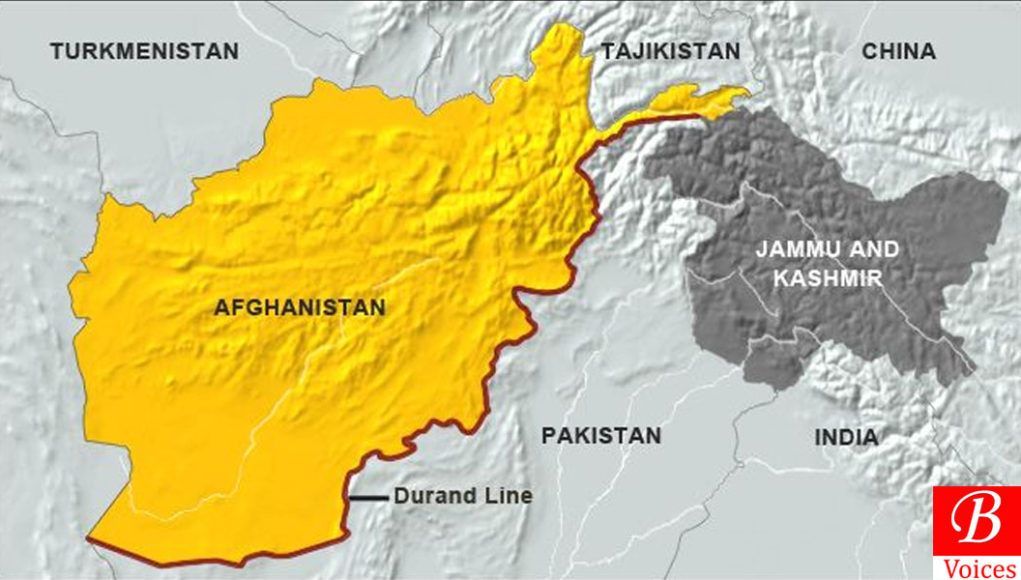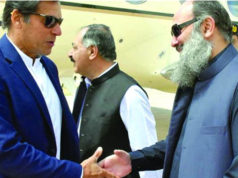Tahira Khan
Pak-Afghan relationship has been loaded with the history of armed hostilities where the recent Chaman clash came out to be the worst one-bringing the fore deep-rooted issues of troubled neighbors at stage, once again. Though, at first, the violent move seemed to be ill-thought and hasty one but behind this a long historical narrative is cultivated which is producing nothing but the seeds of mutual suspicion.
It may not be easy to ascertain the ways for carving a better path of conciliatory diplomatic tone but, yes, we can analyze that historical reasons or perspectives which has created a warlike situation for both countries. This conflict is having three dimensions which are as under;
Taliban and Militant Insurgency
Controversial border
Afghan Refugee Problem
Terrorism and insurgency are two sides of the same coin which is always casted for acquiring particular strategic objectives. Same is the case with Pakistan. In order to counter Soviet Invasion, the Zia Regime radicalized the notion of Taliban and formulated such Islamist policies which, later on, created havoc not only for Afghanistan but Pakistan itself.
The attack of September 11 led to the reversal of Afghan policy, along with US administration, which itself led to a structural vacuum (social, political and economic) in Afghanistan. Furthermore, the Indian influence compelled Pakistani establishment to coin the term of Good and Bad Taliban. This was criticized severely but, fortunately or may be unfortunately, it was the need of the hour- though, part of poor policy framework.
The post 2014 era encountered with two important developments which was asking for the complete opposite of present day Foreign policy. First, the withdrawal of NATO forces and second, the expiration of Karzai regime and emergence of another constitutionally elected leader, Ashraf Ghani. We all know that Afghan Security Forces are not capable of providing deterrence against Taliban Insurgency which showed that Pak Army has been given opportunity to initiate talks of security collaboration- need of the hour, indeed. This led to the creation of Afghanistan-Pakistan-United States-China Quadrilateral Coordination Group (QCG) with sole purpose of ‘direct talks between Taliban and Afghan govt.’ But, presence of Mullah Mansour, the Taliban Chief, in Pakistani territory and his killing at drone strike proved to be fatal blow for both the Pakistan’s image and its relations with neighbours, particularly Afghanistan and Iran.
If we do deep introspection of the scenario, Pakistan has lost so many opportunities of reconciliation by committing severe blunders in the name of strategic depth and security centered policies. Despite cultural and religious convergence, the poor policy framework has led the two countries a warlike zones for each other. What we need to understand is that any development in Kabul will, definitely, cast its shadow on Islamabad because of social, political, cultural and geo-graphical contingencies.
The second dimension is based on the controversial aspect of Durand line. Questions are either raised on the legality of the porous border or the closure of border for indefinite time period which is consisting of severe economic repercussions.
Durand line agreement was first signed by Amir Abdur Rehman in 1893 which was then recognized by its successors in 1905, 1919 and 1921, subsequently. Moreover, both, UK and US has termed it as international border between Pakistan and Afghanistan along with Vienna Convention whose conviction has been provided with the legal requirements. Here, Afghanistan is mistaken with her terms and conditions by negating the realistic approach and legal constraints of the situation. The matter must be diplomatically resolved in the light of historical narrative keeping in view the aspirations of Phustoon belt on both sides of the border.
Another critical question about the border arises when Pakistan uses border closure as a bargaining chip. This happens when some concessions are expected to be drawn or the relations exists at low ebb. According to BBC Persian, this has led to dramatic decrease in Pak-Afghan trade from $3 billion to just $500 million.
Consequently, Afghan officials are now tilting towards Iran and India in the context of trade and tripartite agreement between Afghanistan, India and Iran is a sort of substantial evidence for that. In addition, Afghanistan has diversified its trade partners by becoming member of WTO (World Trade Organization) and, now, can import from and export to 163 countries, approximately. This illustrates that lack of farsightedness and poor policy framework has led to create vacuum which has been filled by India. Pakistan is needed to revise its border policy completely as if Afghanistan needs former for open waters then the latter is also required by former to get access to Central Asia for Energy and commerce.
Afghan refugees has been living in Pakistan for thirty years and had developed strong relations within the Pashtun belt of KPK and Balochistan. The decision of their ouster will serve serious concerns both for the Afghanistan and its relations with Pakistan. At the moment, Afghanistan is struggling with Taliban momentum along with the substantiate presence of ISIS. With these threats knocking at the door, Afghanistan is not capable to handle 2 million refugees which Pakistan once welcomed in their territory and now kicking them off will create domestic chaos in all spheres of life.
In accordance with international standards, the Afghanis born in Pakistan can’t be expelled in this case and should be provided with the Nationality. Furthermore, this decision can’t be taken unilaterally by cancelling the legal documents of refugees as it has to be decided by Pakistan, Afghanistan and UN commission, trilaterally.
Bizarrely, Pakistan did what was not only immoral but has raised concerns on the national integration as well.
According to Human Rights Watch Report:
“The exodus amounts to the world’s largest unlawful mass forced return of refugees in recent times”
It’s high time for Pakistan to set priorities in the right direction. As far as beleaguered Afghanistan relation is concerned, matters must be resolved in all three directions: Taliban momentum, border closure issues (legal controversy as well) and refugee crisis. History is repeating itself with the arrival of Gulbuddin Hikmatyar and Russian influence in the region, and this time our national security is more risked than ever before.
In order to counter the growing level of mistrust nothing is needed but to stop managing crisis in the wrong way. Terrorism and economy is the common issue between these two states which could be resolved bilaterally with flexibility and dynamism of foreign policy.
Writer is a team member of Balochistan Voices and a Student of BS (Hons) Political Science in University of the Punjab, Lahore. She hails from Loralai District. Click here to read previous articles written by the author.
Disclaimer: Views expressed in this article are those of the author and Balochistan Voices not necessarily agrees with them.
Share your comments!








